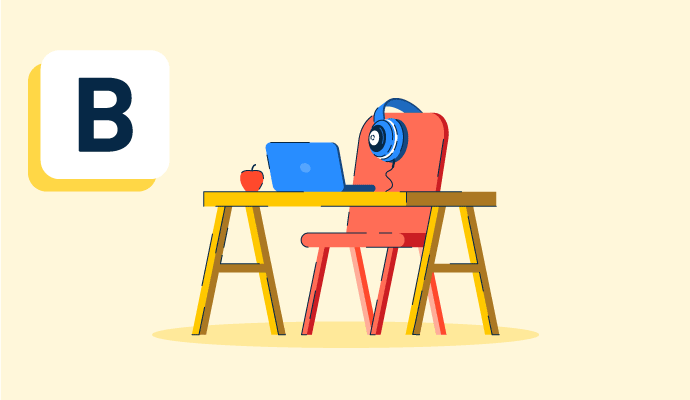What is blended learning?
Blended learning is an educational model that combines in-person instruction with online learning methods. In addition to attending face-to-face classes in a brick-and-mortar building away from school, students watch videos, submit coursework, play interactive games, and take quizzes online.
Instructors value blended learning for its flexibility and ability to create a student-centric environment for children and adults. Also known as hybrid learning, blended learning allows teachers to deliver personalized instruction to home environments and maintain organized educational records.
Blended learning is delivered through learning management systems (LMS). Specialized software exists for K-12 learning solutions and corporate LMS, providing a centralized platform for courses and training.
Types of blended learning
Teaching is an individualized process, and methods vary widely based on the type of content and students’ learning propensities. Several kinds of blended learning exist to address these unique needs.
- Face-to-face: In this model, instructors mainly teach in a brick-and-mortar location, like corporate headquarters or a college building. Instructors give supplementary online activities for students to complete on their own.
- Enriched virtual learning: This type primarily consists of remote learning, but the school or company offers a few required or optional in-person sessions to reinforce online instruction.
- Flipped classroom: In this model, students independently learn most of the material online through videos and articles, and then they apply this learning in an in-person, instructor-led session.
- Gamification: This type turns education into play to enhance student interest and motivation. Students compete with others to complete educational missions and earn badges or prizes.
- Flex model: One of the most individualized methods, the flex model centers around an independent learning path for each person. Students or employees finish relevant lessons at their own pace.
- Self-blend: In this model, learners take in-person courses and have access to online resources for topics they'd like to study. These resources, which are available in a centralized location, include articles, whitepapers, videos, website links, and course modules.
Benefits of blended learning
Blended learning offers several advantages over traditional education methods. When corporations choose this model to train employees, they notice benefits like:
- More flexibility. The blended learning model gives learning and development (L&D) teams more options for delivering information. They can supplement in-person training with online modules, games, and quizzes.
- Better record keeping. Blended learning is delivered via an LMS system, which means that the company can track who has completed the online components without relying on individual employees to submit documentation.
- Lower costs. In the long run, blended learning often saves money over conducting all sessions live with paid full-time corporate trainers. An organization might have a live orientation training each month for new hires but create video modules and quizzes for the most common topics trainees need.
- Better engagement. In the traditional model, employees congregate in a large conference room and receive direct instruction from trainers and speakers. While this works for some learners, many lose focus. With the addition of online activities, individuals engage better with the content, often with frequent comprehension checks.
- Increased reach. Today, many organizations have remote workers around the world. Flying these employees to a central location is often too costly and logistically challenging. Because blended learning offers an online component, remote workers can easily engage in corporate training.
Blended learning best practices
The best organizations strive for continuous improvement, making strategic changes in processes and products. They need to keep employees educated about these changes, as well as any human resources policies or legal or financial updates. To deliver important information with the best results, organizations need to follow these best practices.
- Ask employees about their preferences. One of the advantages of blended learning is that it’s flexible, with a multitude of format options for the online component. Organizations can conduct surveys to learn more about employees’ learning preferences. For example, some learners prefer auditory learning, while others learn best when collaborating.
- Tie content to organizational goals. When creating blended learning programs, companies should consider the company vision, mission, and annual and long-term goals. Then, they can work backward to figure out which topics are most important.
- Think about learning outcomes. Companies should keep educational objectives at the forefront for the course's online component. Even though visual design and multimedia are also important, companies have to clarify what they want employees to know or do when they leave each session.
- Run the course as a pilot. Once a blended learning course is complete, it’s a good idea to conduct a test run via a small pilot program. Participants can provide feedback, and the company can make adjustments before rolling it out to the rest of the staff.
- Choose the right instructor. A blended learning program has both online and in-person components. To ensure employee engagement and strong outcomes, organizations need qualified, experienced instructors.
Want the latest information on virtual learning options? Read about 2023 trends in online learning platforms.

Kelly Fiorini
Kelly Fiorini is a freelance writer for G2. After ten years as a teacher, Kelly now creates content for mostly B2B SaaS clients. In her free time, she’s usually reading, spilling coffee, walking her dogs, and trying to keep her plants alive. Kelly received her Bachelor of Arts in English from the University of Notre Dame and her Master of Arts in Teaching from the University of Louisville.



















